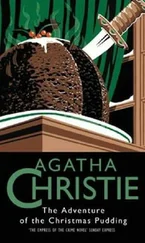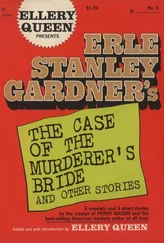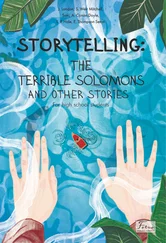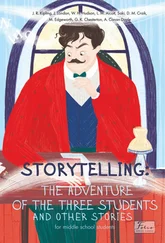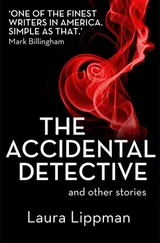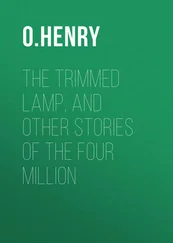How had two such different beings come to be present in the same place at the same time?
Given the stillness of their deadlock, it would have been possible to cut them out (in three dimensions, of course), breaking their potentially violent embrace, and place the separate figures in other scenes: the criminal slitting or about to slit the throat of one of his many victims, a defenseless woman, for example; the cartoonist horrified to see that a bad printing job had spoiled a work that he had spent months bringing to perfection. No changes or adjustments would have been necessary: the same posture and gestures, the same facial expression, could work in any number of different situations, and work so well that nobody would ever know.
Eventually, the top halves of both figures, from the waist up, began to lean forward simultaneously. The relative positions of the arms and heads remained the same, although the faces took on a gray luminosity. The leaning slowed to the point where it was imperceptible to the eye; but after a certain lapse of time it was clear that their faces were now a little closer to the floor. It was as if they were leaning down to look for something at their feet, both at the same time. But it was also as if they were suffering from material fatigue, and the hinges or joints in their waists were loosening.
SEPTEMBER 25, 2009
AS A KID I PLAYED some extremely strange games. They sound made up when I explain them, and I did, in fact, make them up myself, but many years ago, when I was still in the process of becoming the self that I am today. I made them up, or else my friends at the time did: it comes to the same thing because those kids contributed to the accumulation that resulted in me. The reason I’ve set out to describe the games and give a written account of them is that people have told me on more than one occasion that they really should be recorded, so that if I die tomorrow, the ideas won’t be lost forever. I’m not so sure of their uniqueness. Children are always coming up with the craziest things, but the repertoire is not infinite. Relying on my intuition and the law of probabilities, I’d be prepared to bet that the same or similar ideas have occurred to other children, at some point, somewhere. If that is the case, and a copy of this publication falls into the hands of a reader who was one of those children, these descriptions will serve as a reminder, and perhaps a resurrection, of a forgotten past. It will, I think, be necessary to go into some fairly complicated details, and this may lead to excessive technicality, but I’m undertaking this task in the hope of discovering what my childhood had in common with other distant, unknown childhoods, and since the shared element is bound to be something small, a fine point, and I don’t know which small thing it is, which detail in particular, I have no choice but to set them all out. There’s also a more practical reason, which relates to comprehensibility: even the most insignificant details are important for the complete explanation of mechanisms that might, at first glance, seem absurd. One has to work through the list of senseless oddities so as not to miss the one that has the magic power to make sense of everything.
I will begin with a mathematical or pseudomathematical game for two players, which consisted simply of naming a bigger number than the one just named by your opponent. If one player said “four” the other had to say “five” (or more: he could also say “a thousand”) in order to stay ahead, and so it went. Basically, that was the essence of the game; as you can see, it was extremely simple. Obviously, given the ordered sequence of numbers, to win you had to avoid the mistake of naming a number smaller than the one that had just been named. . But it’s also obvious that victory by default would be accidental in such a game and would not affect its essence. The winner was, essentially, the one who came up with a number so big that the other player couldn’t find a bigger one. We respected this principle: we never made mistakes, and if one of us had slipped up, the other would have been more than prepared to ignore it and keep going. So it’s hard to imagine how the game could ever have played itself out fully. There seems to be a contradiction in the fundamental idea. But I think all the difficulty springs from adopting an adult perspective, trying to understand the theory of the game and reconstruct a session of play. For us it wasn’t hard to understand; on the contrary, it was almost too easy (that’s why we complicated it a bit). The difficulties, which in any case we found amusing and absorbing, were on another level, as I will try to show. The game itself seemed perfectly natural to us.
Before getting down to details, however, some clarifications are necessary. First: age. We would have been ten and eleven years old (or eleven and twelve: Omar was a year older than me; we were at primary school but in the final grades). Which is to say that we were no longer little children learning how to count, fascinated and amazed by the miracle of arithmetic. Not at all. Also, back then, thirty-five years ago, learning was no game: it was straight down to business; not a minute was wasted. Even in our semirural school (School Number 2 in Coronel Pringles: it still exists), the academic level was remarkably high; these days it would seem too much to ask. And all the children, though most of them came from farms and had illiterate parents, kept up with the pace, no two ways about it. The “hump” was sixth grade, and many stopped there, but if you were in that class you marched with the rest, and it was no dawdle.
The characters: Omar and myself. I never played this game with other people. I can’t remember if I ever tried, but if I did, it didn’t work. It was the kind of game that has to find its players, and does so only by a modest miracle. It had found the two of us, and we had adapted so well to its intricate, crystalline recesses that we had become a part of it, and it a part of us, and everyone else was necessarily excluded. Not so much because we would have had to explain the rules, or allow for idiosyncrasies (it was a mathematical game), but because the two of us had already played so much — all afternoon, hundreds of times — and we couldn’t start over; other players could, but not Omar and I.
Omar Berruet was not my oldest friend; his family had moved to the neighborhood a couple of years earlier, from Greater Buenos Aires (Berazategui), but his parents were from Pringles. His mother and mine had been childhood friends; one of his father’s sisters lived around the corner and had two sons, the Moraña boys, whom I’d known for much longer; the older one was in my grade all through primary school. The Berruets rented the house next door to ours. Omar was an only child, a year older than me, so we weren’t in the same class at school, but being neighbors we got to be friends. We’d spend the whole day together. He was tall and thin with straight blond hair, pale-skinned and lymphatic, unlike me in every way: the attraction of opposites brought us together. I suspect that I tended to boss him around and subject him to my erratic and fanciful moods.
He was happy to go along with my whims, but he also had a hidden strength that a number of painful experiences taught me to respect. Omar wasn’t lacking in intelligence, but when it came to demonstrating it, he was, again, my opposite: while I was all boasting, noise, and display, he responded quietly, with irony and realism. (This is as good a place as any to mention that he stayed in Pringles, became a bank teller, and had eight children, one of whom died.)
And finally, the scene. Back then, the town of Coronel Pringles was more or less like it is today, but a bit smaller, not so built up, with more dirt roads. Calle Alvear, where we lived, was the last paved road; another hundred yards and there were vacant lots (whole empty blocks), farmhouses, the country. On our block there were five houses, all on the same side: Uruñuela’s place on the corner, the house where my aunts Alicia and María lived, our place, Gonzalo Barba’s house (he was my dad’s nephew and business partner), and the Berruets. On the other corner: my dad’s business Aira & Barba, with its yard and offices. The houses rented by Gonzalo and the Berruets belonged to Padelli, and their backyards adjoined his place, which was just around the corner. On the other side of the street, behind a long wall, was the land belonging to the corner houses, Astutti’s on the left and Perrier’s on the right. The most interesting things in those wild tracts were, in Astutti’s yard, a supermodern mobile home that the owner’s brother (I think) was building or cobbling together (this hobby outlasted my childhood), and in Perrier’s yard, a tree, which was in fact a pair of twin trees, with intertwined branches, a gigantic conifer, the biggest tree in Pringles, as high as a ten-story building and perfectly conical in shape.
Читать дальше

